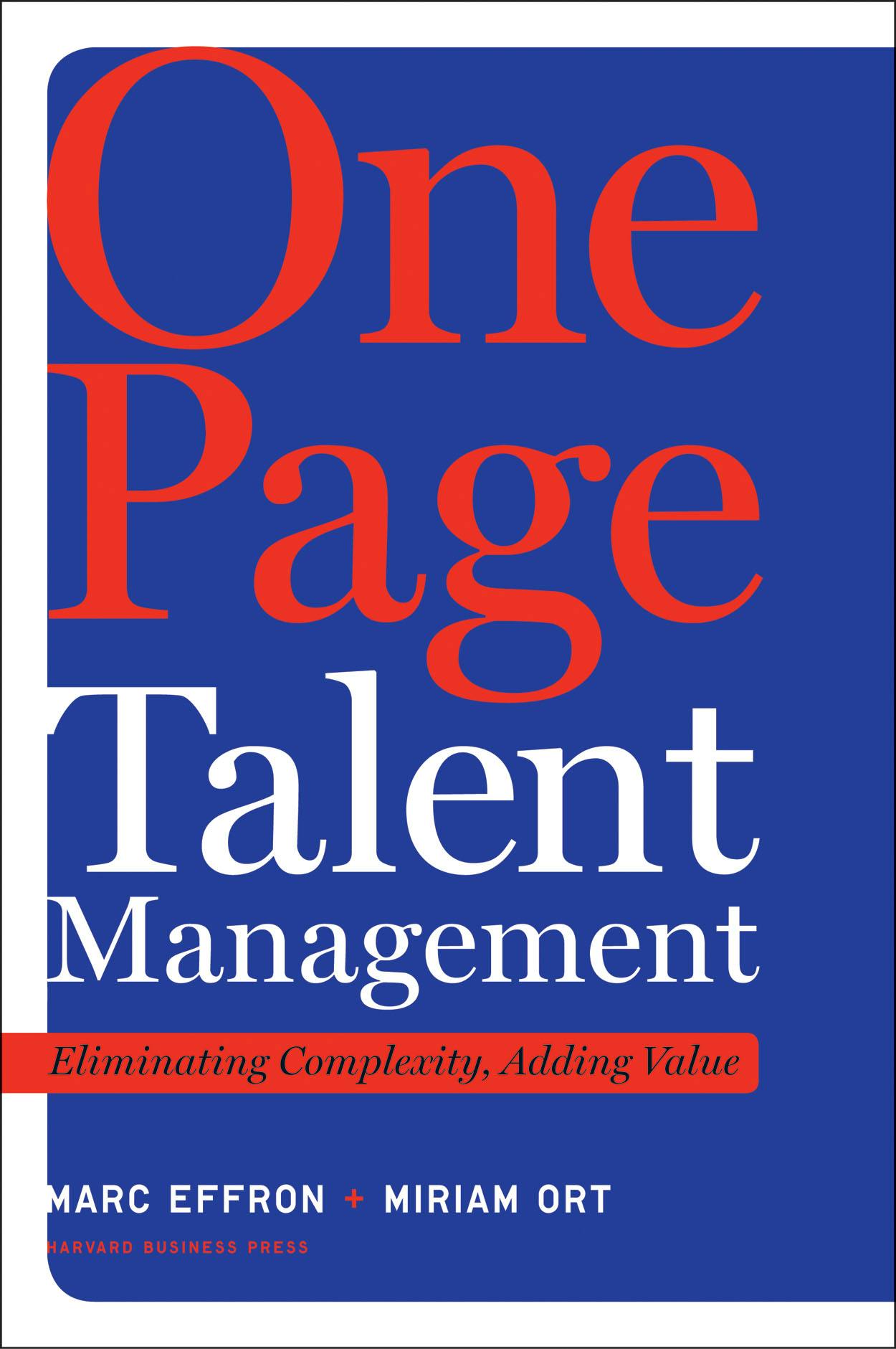By Marc Effron and Miriam Ort
Through our corporate and consulting experience, we have identified four talent-building barriers that organizations create for themselves and then regularly stumble over. These barriers explain why line executives’ exhortations and HR’s actions to build talent are not translating into increased talent quality and depth.
Creating Needless Complexity
When you consider the simple intent behind most talent processes, it can be challenging to understand why a line manager experiences so much complexity. A simple process like setting goals often becomes a multipage, headache-inducing exercise and in doing so puts a huge barrier in the way of increasing organizations’ performance.
Where organizations go wrong is that they fail to balance complexity with value as they build these processes. It is not that the additional components layered on — from highly detailed competency models to the extra hundred questions on an engagement survey — are technically wrong. Many have sound behavioral science to support their inclusion.
However, as each additional element is added, evaluating the trade-off between the complexity it brings to the overall process and the impact it will have on the original business objective is critical.
Adding No New Value
Talent management tools have not been designed to help managers make smarter decisions or to make their jobs easier. Managers often need to attend training sessions to learn how to use a talent tool or process or must rely on their HR manager or other expert to help them. When a manager receives an engagement survey report, can he quickly understand the business choices he should make because of it?
The talent review process may differentiate the best talent from the rest, but do managers know how to use that information productively? In many organizations, managers have come to see talent management tools and processes as largely divorced from their day-to-day management challenges.
Neglecting the Science
As we mentioned earlier, HR and talent management can rely on a rich body of academic research to help inform the right decisions. Basic behavioral science (e.g., Ivan Pavlov’s classic conditioning or B. F. Skinner’s behavioral research) provided the foundation for the industrial and organizational psychology research (e.g., Victor Vroom’s expectancy theory or Richard Hackman and Greg Oldham’s job design) of the past 50 years that informs every modern talent practice, from 360-degree feedback to conducting performance reviews.
If companies would faithfully follow this science, they would find that it performs up to its billing. Their talent practices would work as the research suggests they should. If they do not understand or choose to ignore the science, companies will build talent practices using biases and assumptions and wonder why their talent problems are not going away.
Lacking Transparency and Accountability
Few managers enjoy having tough conversations with their employees. Giving feedback about subpar performance or explaining that a career goal will never be achieved significantly increases most managers’ heart rates. But transparent conversations like these drive higher performance.
Unfortunately, in too many companies, fear of the consequences or a genuine belief that employees do not need this level of clarity means talent practices are opaque. It’s also understandable that managers usually prioritize coaching, performance feedback, and creating development plans after activities that provide a more immediate benefit to their business.
These talent practices are still important, however, and most organizations do not hold their managers accountable for executing them.
Reprinted by permission of HBR Press. Excerpt from One Page Talent Management: Eliminating Complexity, Adding Value by Marc Effron and Miriam Ort. Copyright 2010 Harvard Business School Publishing (www.hbr.org/books).
